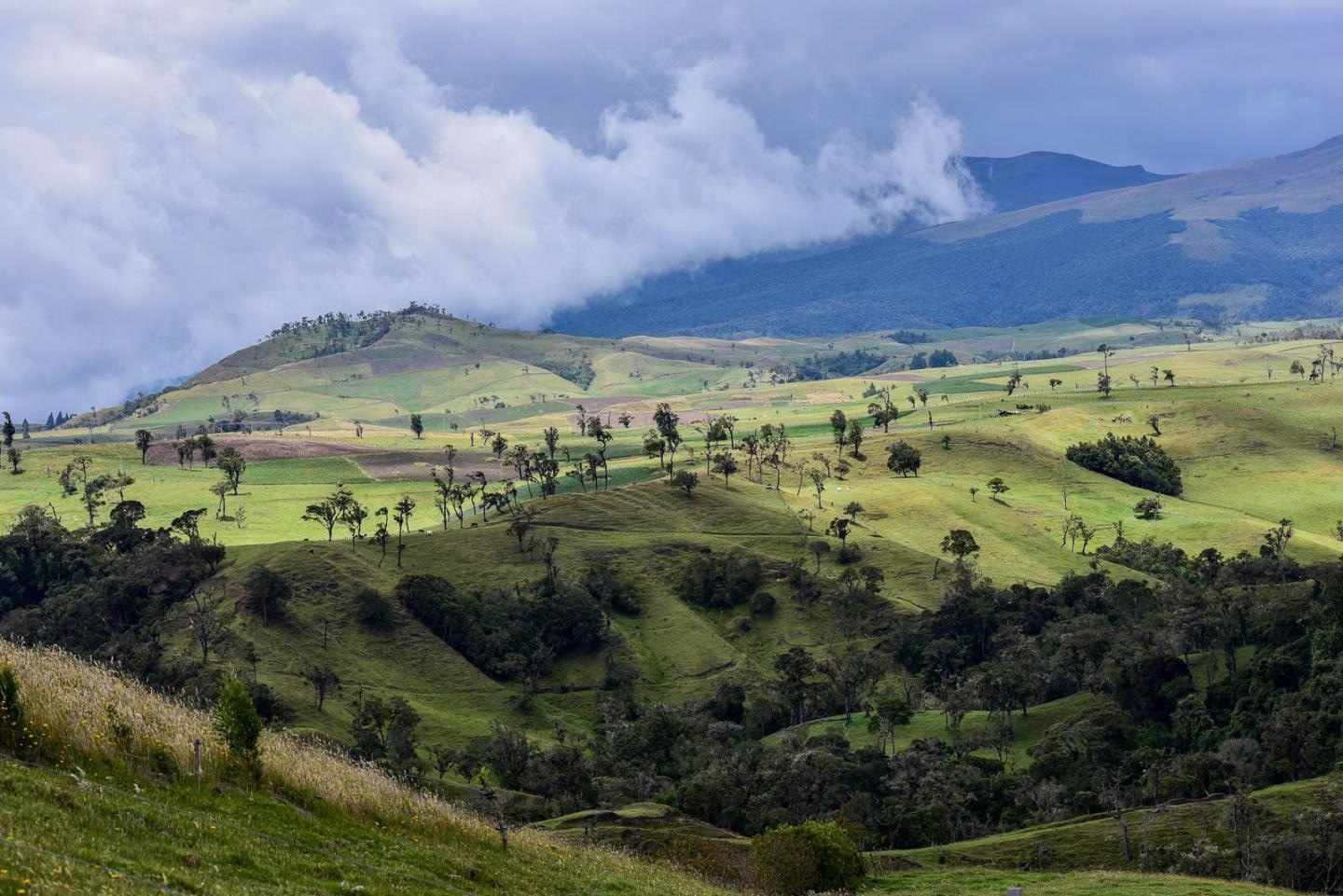Apr 19 2021
According to researchers, climate projections in conservation planning should be a part of more robust biodiversity conservation and should be used to make sure that regions most at risk from climate impacts and biodiversity loss are protected.
 Scientists note that climate change is expected to impact 58% of montane forest in the Peruvian Andes. Image Credit: Alliance of Bioversity and CIAT/N.Palmer.
Scientists note that climate change is expected to impact 58% of montane forest in the Peruvian Andes. Image Credit: Alliance of Bioversity and CIAT/N.Palmer.
Protected regions are usually created in remote locations and low-population density areas and not because of their biodiversity conservation potential. In tropical forests, conservation planning particularly tends to be less stringent and climate is seldom taken into consideration, added the researchers.
However, science-based data and climate projections are crucial to intensely seek out and protect regions where ecosystems are rapidly declining and species are most at risk, stated the authors of the article titled, “Assessment of Potential Climate Change Impacts on Montane Forests in the Peruvian Andes: Implications for Conservation Prioritization,” published in Forests—a peer-reviewed journal.
According to the study, climate change is anticipated to affect 58% of montane forest located in the Peruvian Andes, which is part of the Tropical Andes—the most biodiverse region on earth—specifically from 800 to 1,200 m above sea level.
Because of this, conservation policies and plans should consider the effects of climate change to make sure that both species and habitats are protected in regions where shocks are projected to be quite severe.
In mountainous areas, habitats change very quickly at different elevations. With climate change, if species are forced to move higher up, they may not be able to quickly adapt to cooler temperatures or higher elevations, and eventually could become extinct. Current conservation plans usually focus on protecting habitats and species as they are now.
Vincent Bax, Study Author and Socio-Ecological System Researcher, HZ University of Applied Sciences
“What we’re saying is that we need to use climate projections, and the latest scientific data we have, to protect the most ecologically sensitive areas, now and in future,” added Bax.
Conservation efforts that include both future and present climatic projections will help build more adaptive and resilient plans around the world and prevent extensive destruction of habitats, added the study authors.
The team has urged policymakers as well as national, local, and regional planners to explore more efficient planning that delivers more effective outcomes for the conservation buck.
This includes immediate actions that involve proactive solutions and stringent scientific data to safeguard the changing species and habitats rather than completing reactive conservation measures, observed the researchers.
This research approach to conservation planning can be used in other regions and countries, as the methods are applicable to other ecosystems and mountain forests that will likely be affected by climate change. Natural systems are in constant change, and ecosystems either must adapt or go extinct. In that sense, we must approach conservation using an adaptive management framework, as a process that is not static, but constantly changing and evolving.
Wendy Francesconi, Study Author and Senior Environmental Scientist, The Alliance of Bioversity International and the International Center for Tropical Agriculture
Francesconi continued, “Modeling approaches that predict how climate-induced changes—such as temperature increases, precipitation fluctuations, floods, droughts, fires, and others—affect ecosystems and species populations, help us manage these areas in a proactive manner.”
“Such information can help design or manage protected areas in response to changes, facilitating their recovery. Protecting an area is not the end of the story. As climate change and other threats persist, our approach to conservation should be dynamic, creative, and innovative,” added Francesconi.
As per the 2020 global Living Planet Index, from 1970 to 2016, monitored populations of birds, mammals, fish, reptiles, and amphibians had dropped by 68%.
“That is a huge loss in biodiversity, and it's alarming,” added Francesconi. “Now is the time to come together and help implement measures to reduce this detrimental loss, especially in light of potentially devastating added impacts that climate change can unfold over the next 50 - 100 years if we do not take action.”
Although this paper focuses on biodiversity conservation and adaptation action, the proposed approaches are useful for all of Peru’s efforts to meet commitments under the three Rio conventions, including efforts for Reducing Emissions from Deforestation and Forest Degradation (REDD+), which mostly consider pressure on forests due to anthropogenic causes and do not incorporate climate uncertainties.
Augusto Carlos Castro-Nunez, Study Author, The Alliance of Bioversity International and the International Center for Tropical Agriculture
Castro-Nunez is also the senior low emissions food systems scientist.
Journal Reference:
Bax, V., et al. (2021) Assessment of Potential Climate Change Impacts on Montane Forests in the Peruvian Andes: Implications for Conservation Prioritization. Forests. doi.org/10.3390/f12030375.